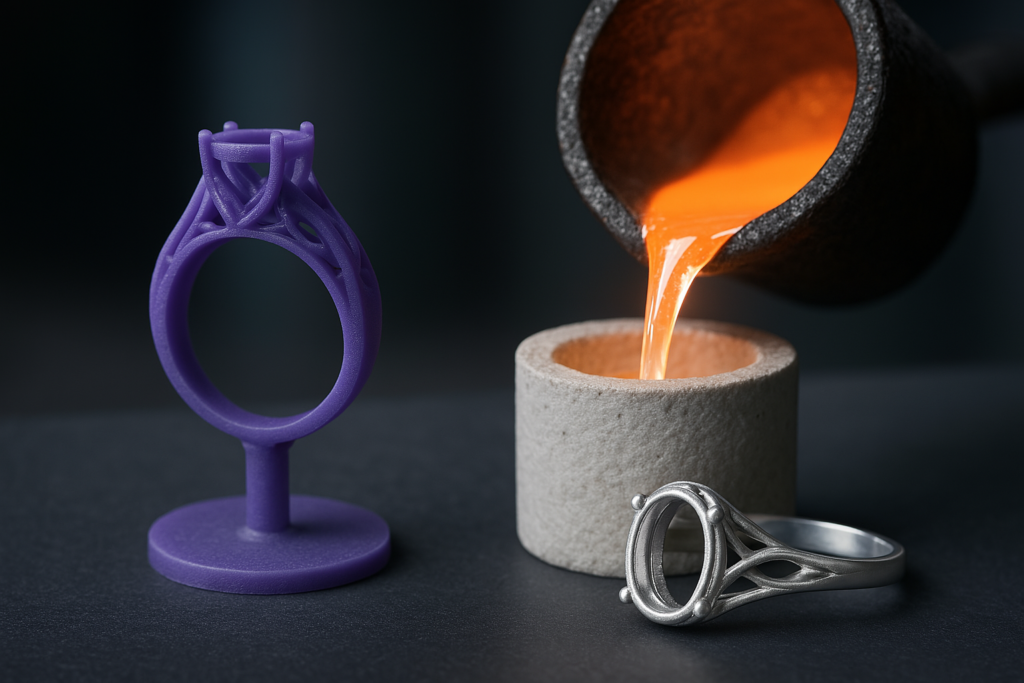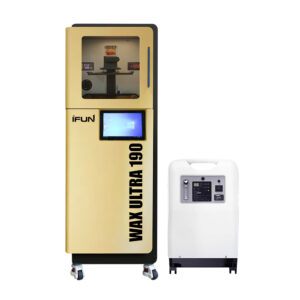The fusion of lost wax aluminum and 3D printed castable resins is revolutionizing the jewelry casting industry, offering innovative solutions to intricate designs and cost-effective production. However, integrating these two technologies in wax casting aluminum processes presents several technical challenges. This article delves into the hurdles encountered and provides practical solutions for overcoming them, ultimately paving the way for more efficient and precise jewelry production.

Temperature Control in Lost Wax Aluminum Casting
One of the primary challenges when combining lost wax aluminum with 3D printed castable resins lies in managing the temperature during the casting process. Aluminum has a relatively low melting point (660°C), but the 3D printed resin mold needs to endure high temperatures without degradation. This makes precise temperature control essential to prevent damage to the mold and ensure optimal results in the aluminum casting process.
Solution:
- Slow and Gradual Heating: Implement a slow, controlled heating process to allow the resin to burn off completely without compromising the mold. Gradual temperature increases help avoid cracking or warping of the mold.
- Pre-Heating the Mold: Pre-heating the resin mold before introducing the aluminum can help reduce thermal shock and minimize the risk of mold damage.
Material Compatibility
Compatibility between the castable resin and lost wax aluminum can be another obstacle. The resin must be able to burn off cleanly without leaving any residue that could interfere with the aluminum’s ability to form a clean, smooth surface. Additionally, the expansion and contraction rates of both materials must be considered to avoid imperfections in the final cast.
Solution:
- Choose High-Quality Castable Resins: Select resins designed specifically for metal casting, as they are formulated to burn off cleanly and leave minimal ash or residue. Ensure the resin’s thermal expansion coefficient is compatible with aluminum.
- Test Material Pairing: Conduct tests to evaluate the resin’s performance at various temperature levels, ensuring that it can withstand the aluminum’s heat without causing deformation or residue buildup.
Mold Precision and Detail
3D printing technology offers the advantage of producing highly detailed and intricate designs, but the precision of the mold is crucial in ensuring that these fine details are replicated in the lost wax aluminum casting. Any inaccuracies in the resin mold can result in defects in the aluminum cast, affecting the overall quality and finish of the jewelry piece.
Solution:
- Optimize 3D Printing Settings: Use high-resolution settings in the 3D printing process to ensure the resin mold captures all the fine details. A higher layer resolution reduces the likelihood of printing errors and ensures that the mold mirrors the design’s complexity.
- Post-Processing and Inspection: After printing, inspect the mold for any imperfections or deviations from the intended design. Use post-processing techniques like sanding or polishing to ensure the mold’s surface is smooth and accurate before casting.
Wax Removal and Burnout Process
In lost wax casting, the removal of the wax (or resin in this case) is a critical step in achieving a clean cast. For lost wax aluminum casting, the resin needs to be fully eliminated before the aluminum is poured into the mold. If any resin remains, it can contaminate the aluminum or cause defects such as bubbles or incomplete filling of the mold.
Solution:
- Effective Resin Burnout: Utilize an optimized burnout schedule for the resin mold to ensure it completely decomposes. This might include an extended burn-out period at a lower temperature to gradually decompose the resin without compromising mold integrity.
- Ensure Complete Resin Removal: Use specialized equipment or techniques, such as vacuum-assisted burnout or heat-assisted resin removal, to ensure no residue is left in the mold.
Aluminum’s Behavior During the Pouring Process
When casting aluminum, its fluidity, cooling rate, and the potential for oxidation are critical factors that can impact the final piece’s quality. In some cases, the introduction of aluminum into a resin mold may cause excessive oxidation or bubbling, particularly if the mold is not adequately prepared.
Solution:
- Control Pouring Speed and Pressure: To reduce oxidation and minimize air bubbles, pour the aluminum slowly and steadily. Employ a vacuum-assisted casting process to eliminate air pockets and reduce the risk of oxidation.
- Use Anti-Oxidation Coatings: Apply coatings to the mold that help reduce aluminum oxidation during the pour. These coatings form a protective layer that shields the molten metal from the atmosphere.
Durability of the Final Cast
Aluminum’s durability in jewelry applications is often questioned due to its relatively low strength compared to other metals. Jewelry pieces cast with lost wax aluminum may not have the same robustness as those made from precious metals. Therefore, ensuring that the final cast is strong and long-lasting is crucial.
Solution:
- Use Alloyed Aluminum: Consider using aluminum alloys with improved strength and corrosion resistance. These alloys can maintain the lightweight nature of aluminum while enhancing the metal’s durability and wear resistance.
- Post-Casting Treatment: Implement post-casting treatments such as heat treatment, polishing, or anodizing to improve the strength and surface finish of the aluminum cast.
The integration of lost wax aluminum with 3D printed castable resins presents a promising opportunity for innovative jewelry casting. However, overcoming challenges like temperature control, material compatibility, mold precision, and the burnout process is essential for achieving high-quality results. By carefully selecting the right materials, optimizing casting processes, and ensuring precise mold creation, jewelers can unlock the full potential of these technologies, resulting in faster production times, intricate designs, and cost-effective solutions in aluminum jewelry casting.
Investment Casting Supplies: How to Improve Efficiency in Lost Wax Casting

